Isometries for computational design and fabrication
Discrete differential geometry, Computeraided design, Computational fabrication, Architectural geometry, Discrete isometry, Isometric registration, Killing vector field
Publication
ACM Transactions on Graphics
Authors
Caigui Jiang, Hui Wang, Victor Ceballos Inza, Felix Dellinger, Florian Rist, Johannes Wallner, Helmut Pottmann
Abstract
We solve the task of representing free forms by an arrangement of panels that are manufacturable by precise isometric bending of surfaces made from a small number of molds. In fact we manage to solve the paneling task with surfaces of constant Gaussian curvature alone. This includes the case of developable surfaces which exhibit zero curvature. Our computations are based on an existing discrete model of isometric mappings between surfaces which for this occasion has been refined to obtain higher numerical accuracy. Further topics are interesting connections of the paneling problem with the geometry of Killing vector fields, designing and actuating isometries, curved folding in the double-curved case, and quad meshes with rigid faces that are nevertheless flexible
Figures
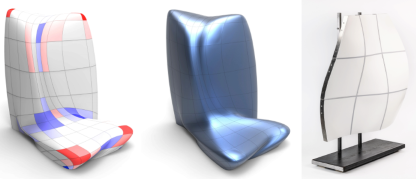
Fig.: Smooth freeform skins from flexible panels. It turns out that constant Gaussian curvature surfaces, i.e., spheres and pseudospheres, provide almost universal molds for the manufacturing of panels bending isometrically. Here a design by Zaha Hadid Architects is covered by panels struck from a small number of spherical molds (red) and pseudospherical molds (blue), as well as single-curved panels that are intrinsically flat (white).
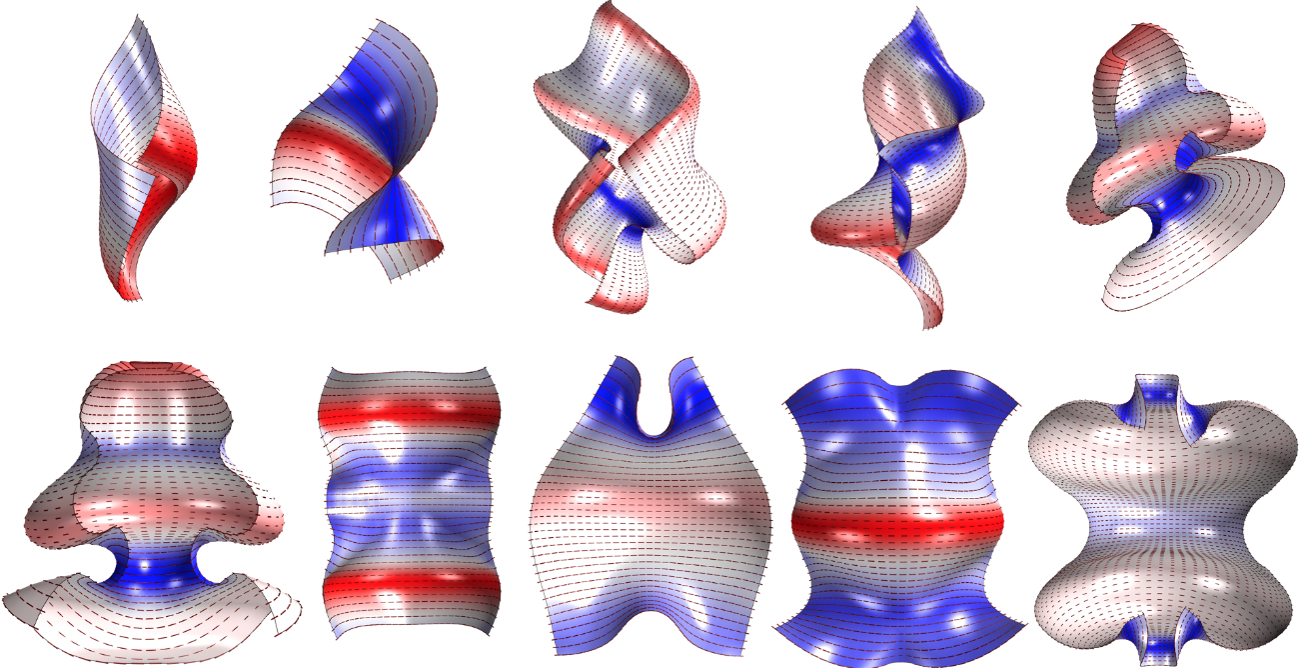
Fig.1: Infinitesimal isometries tangential to surfaces (Killing fields) exist on surfaces isometric to rotational surfaces (above surfaces all isometric to rotational ones, deformed used the method in “Discrete Geodesic Parallel Coordinates” paper). Otherwise vector fields that are as Killing as possible yield information on paneling. The color coding is according to Gaussian curvature — true Killing fields must follow its level sets.


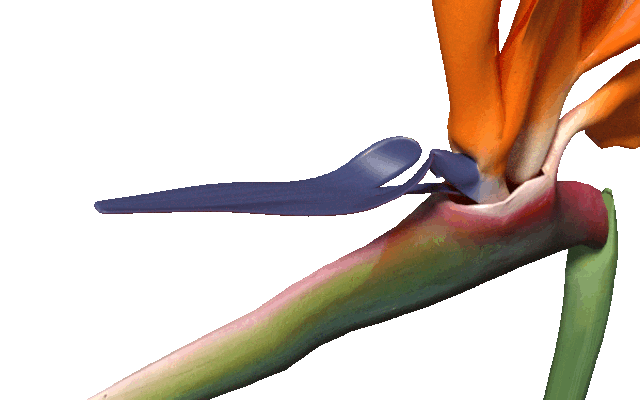
Fig.2: Simulating the bending process (isometric deformation) of the Strelitzia Reginae flower.
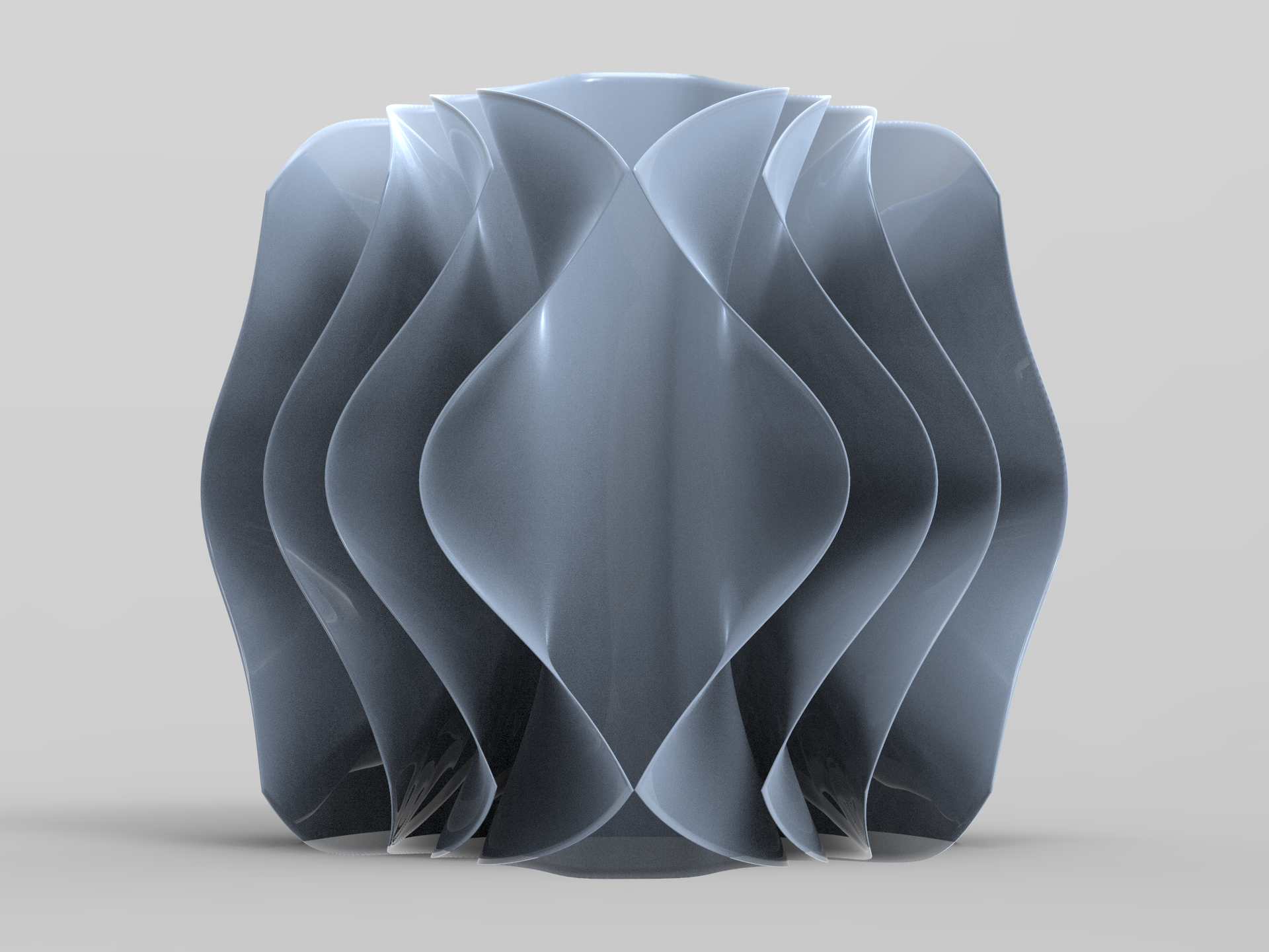
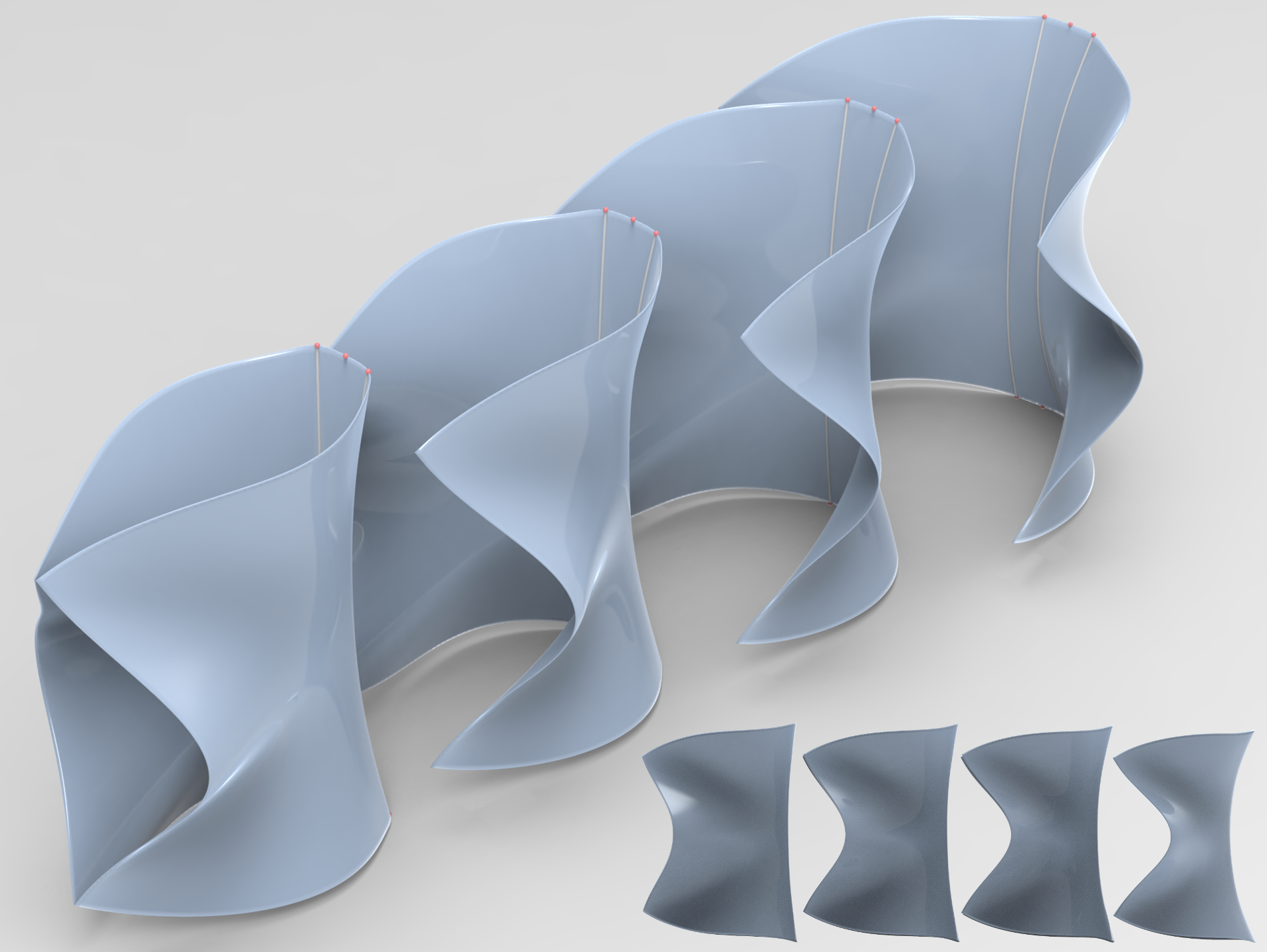
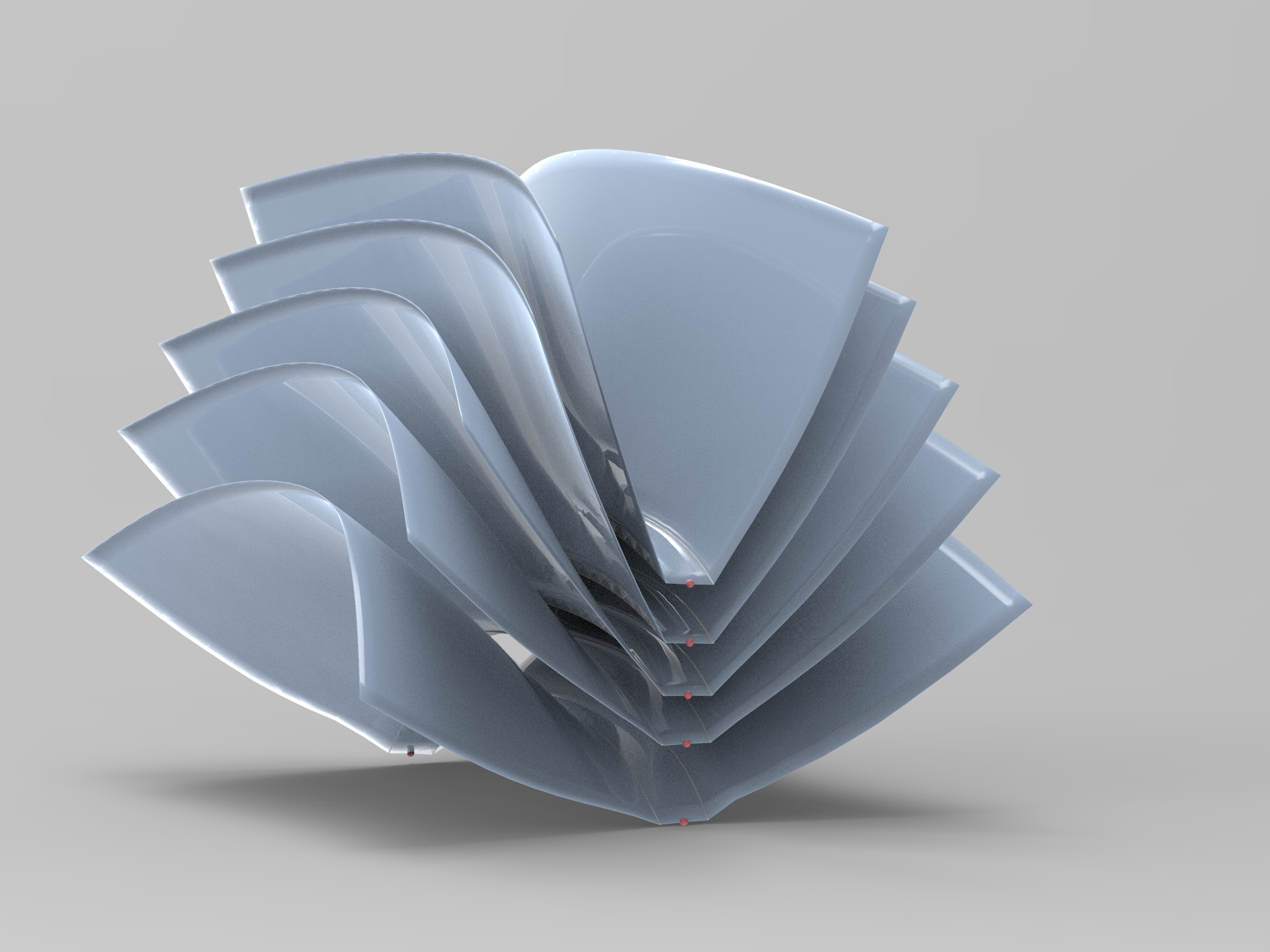
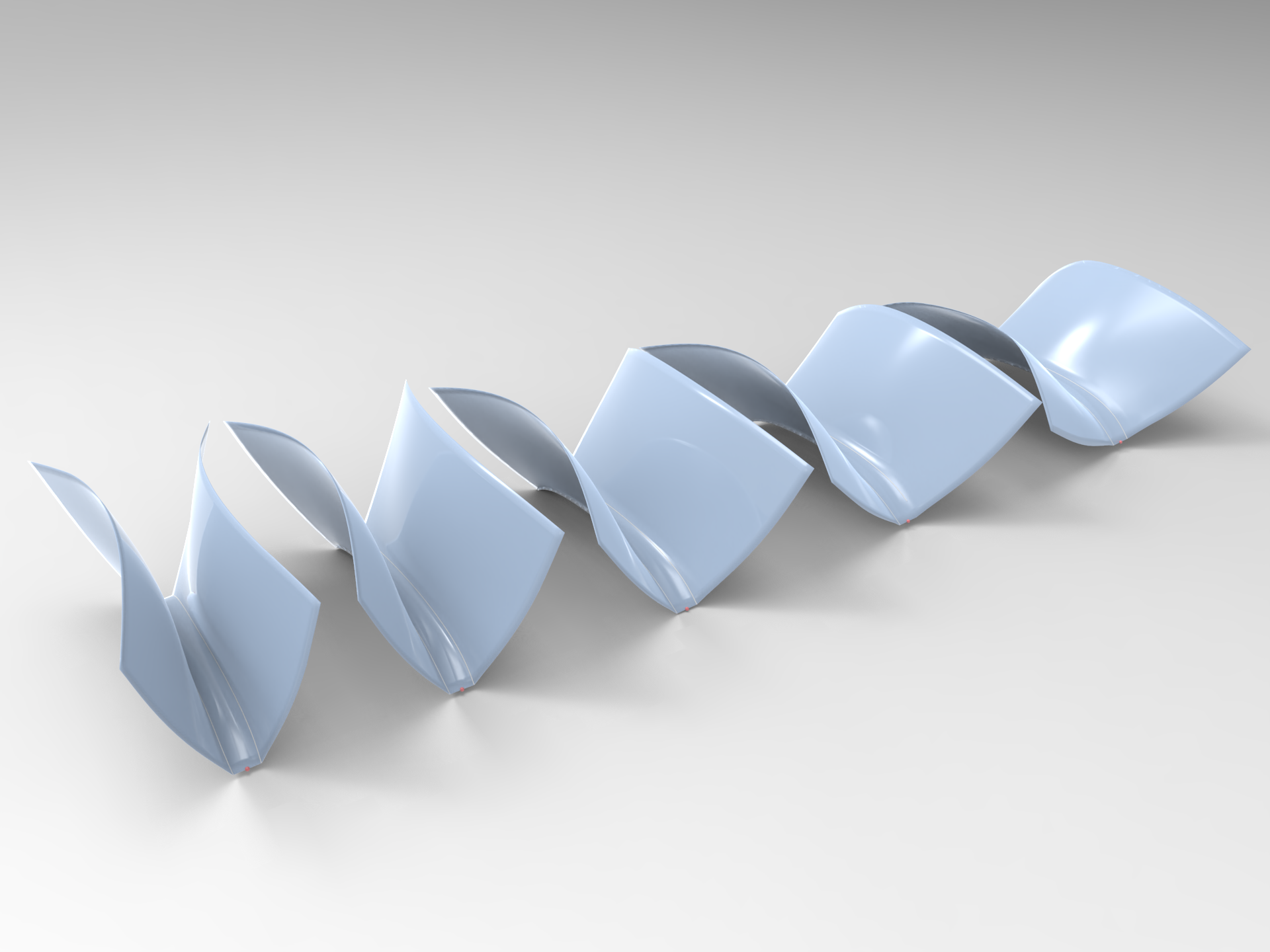
Fig.3: Isometric deformation of meshes.
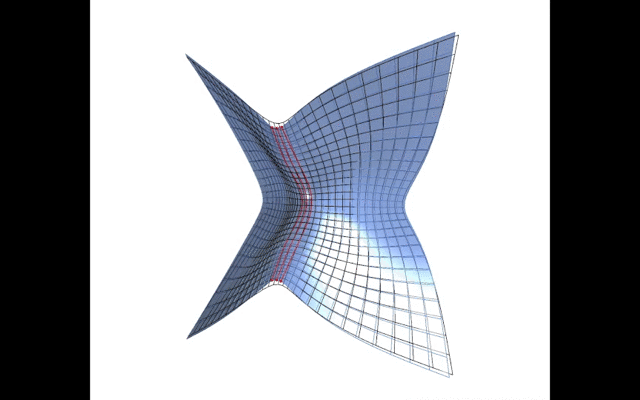
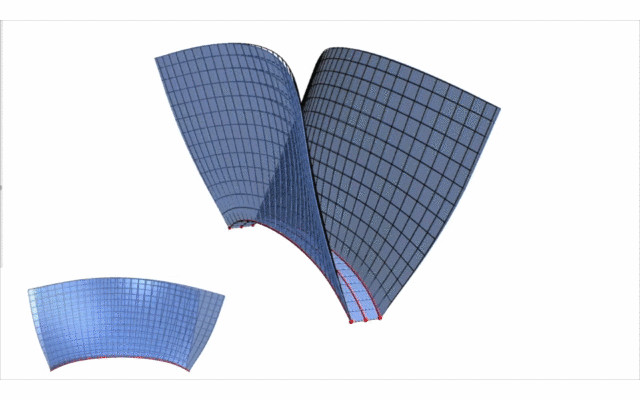
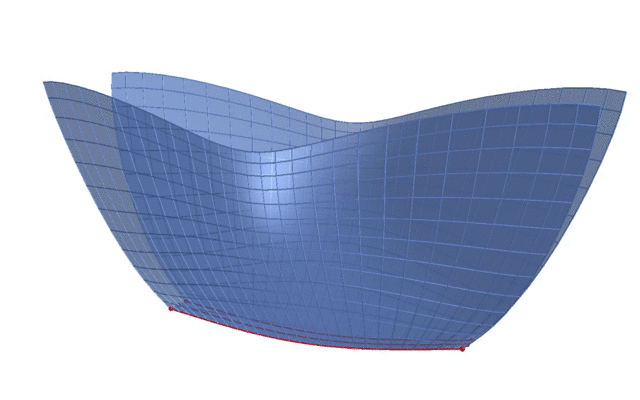
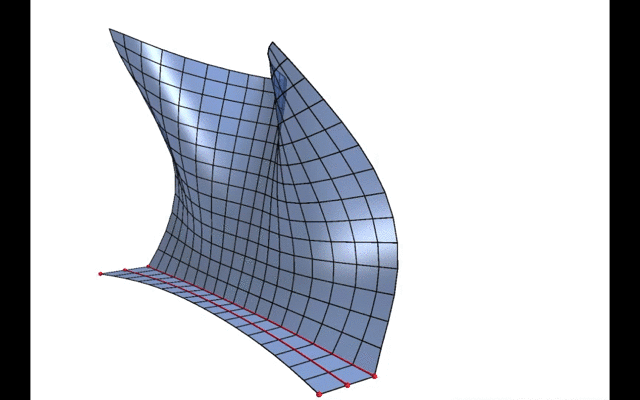
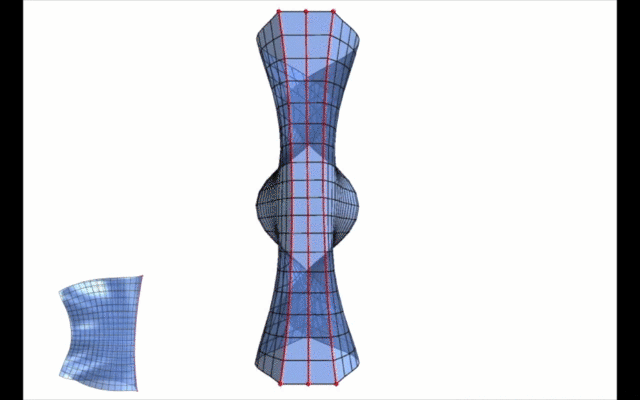
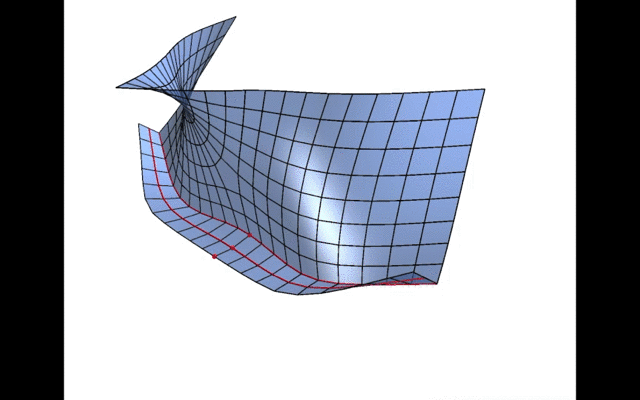
Fig.4: Felixion behavior of meshes.
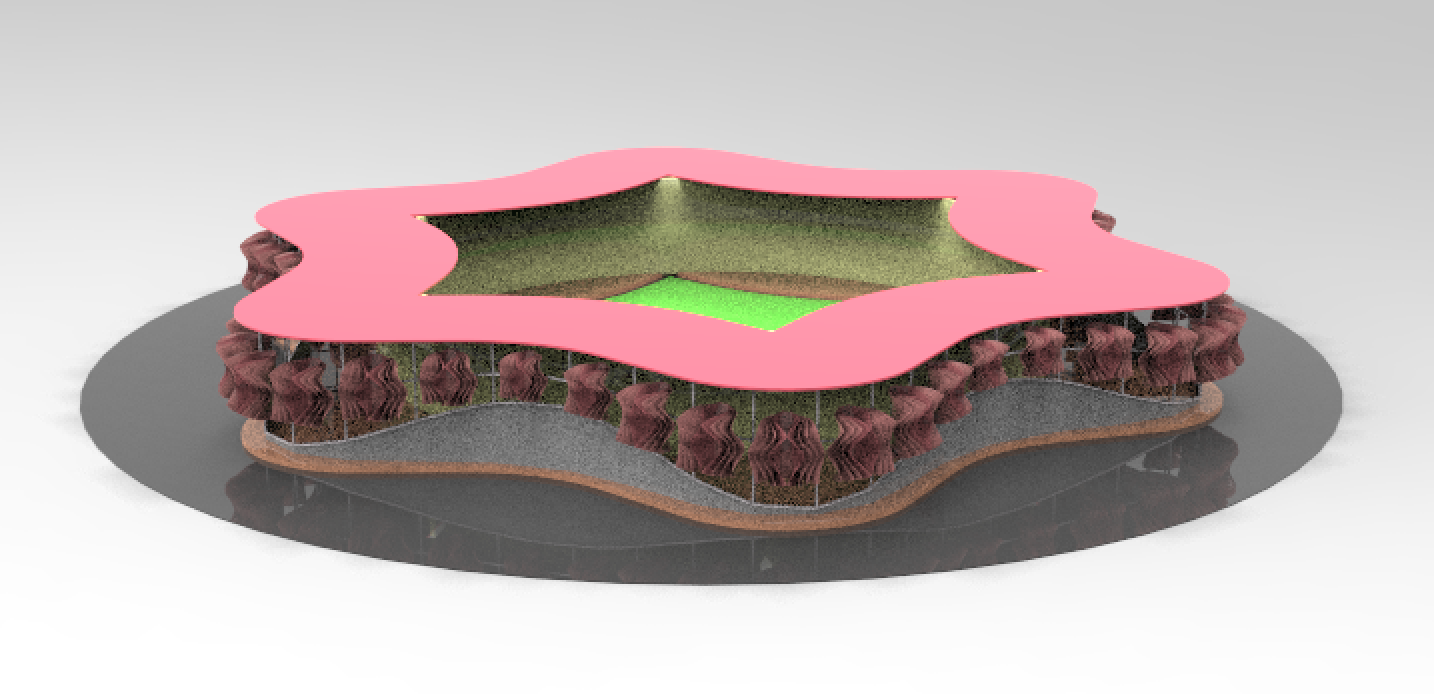

Fig.5: Flexion facade design analogous to the “flectofin” shading elements (Lienhard et al. 2011).
Video
Presentation video is here.